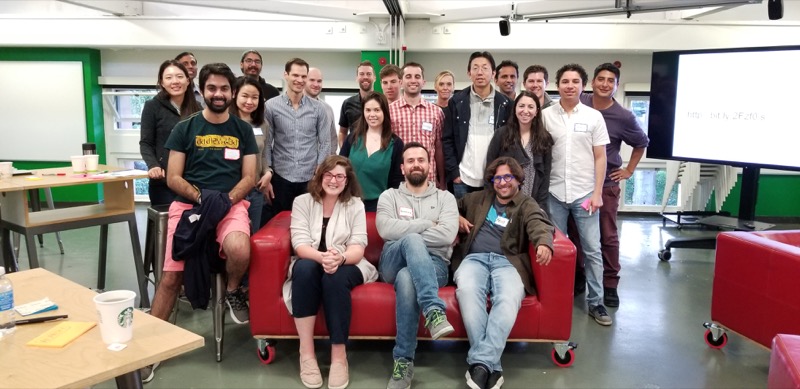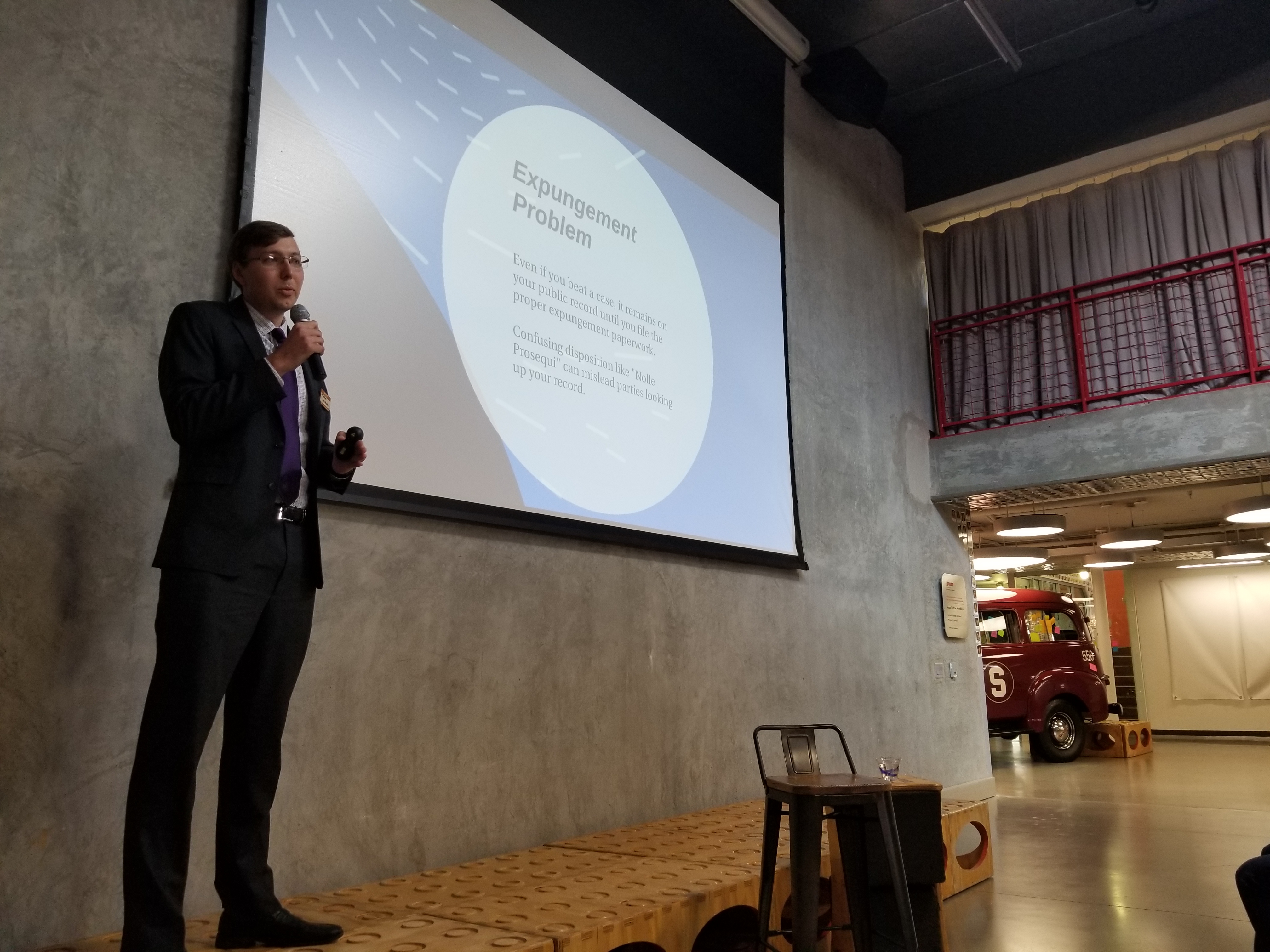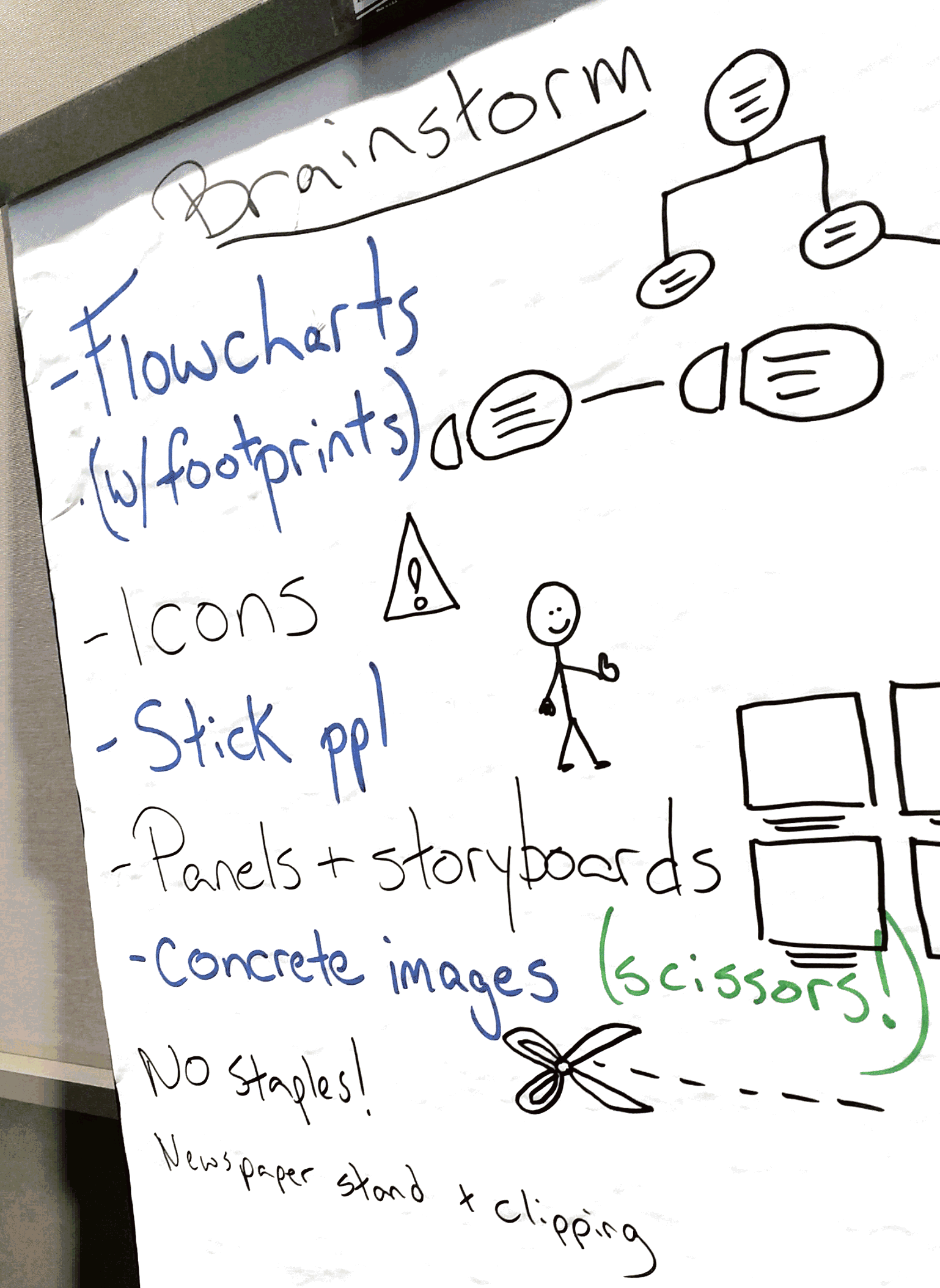Last week the Legal Design Lab hosted a pop-up workshop: Prototyping Blockchain for Law.

Our main partner in the class was Microsoft — who sent team members to work with us on thinking through how blockchain might support their legal work. We had two guest visitors, Jeff Ward from Duke Law and Aaron Wright from Cardozo Law, both of whom have taught blockchain in their law schools before. We were lucky enough to have them bring their expertise to Stanford, and condense their intro to blockchain for our students in our very brief pop-up. In addition, we had some guest coaches — Tony Lai from Legal.io and Jay Mandal from SAP Labs, to help the students.
Our pop-up was only a day and a half — and it aimed to mix background training with active learning. It was framed as a design workshop, mixed with technical training, with lectures and hands-on activities to learn about this very new, and sometimes difficult to grasp, world of blockchain and Bitcoin.
In the first day we focused on getting all of the students and partners to the same level of basic knowledge around blockchain. Jeff and Aaron took the lead, by walking the students through the essential concepts of blockchain and how it works. For each part of the lecture, they provided activities to reinforce and think through the knowledge. They also gave special attention to the world of smart contracts, and the burgeoning ways in which lawyers are integrating blockchain and automation into transactional law work.
In day two, we switched over into design mode. The students all formed teams around different design briefs that an outside partner brought to them. In some cases it was the students who came up with the idea for applying blockchain to law.
Our main partner in this pop-up was Microsoft, whose legal team faces a huge quantity of contracts to oversee. They came with the broad question of how might blockchain and smart contracts be useful to them in their contract management and procurement processes.
Another challenge was around the prospect of having something like Pro Bono Coin, in which a blockchain ledger and new cryptocurrency would provide more efficiency and market effects for pro bono legal services.
And the final challenge was around digital music, and how artists might be able to better get paid four uses of their music online, by removing intermediaries and instead using blockchain.
During the design day, we began by explicitly not talking about the technology, but rather instead getting the groups to map out the use case, the stakeholders, and what motivations people might have to use a new blockchain base system. The goal here was to not just jump straight to a solution, based on the hot new technology of blockchain, but rather to ground the development in human needs, and human behaviors.
From there, we went through a design cycle: mapping out opportunities, vetting a use case with review from the rest of the workshop; diagramming out an initial prototype of what a new system would be; and getting critical feedback to scale it back to an even more basic prototype.
We also ran through Blockchain-specific brainstorms: focusing in on features and functions, on governance, permissions and ethics, and on the roll-out and ‘go-to-market’ dimensions. This grid brainstorm was meant to stretch the students’ thinking about the system, to account for getting people engaged with an unfamiliar technology and how to govern behavior — and not just how the technology might work.
The challenge is, when thinking through a complex new system of rules, governance, technology, and many different stakeholders — how do you prototype this? We challenged the student groups to scale way back, to start out with something like a set of interfaces, a process map, diagrams of some sample transactions — anything to make it much more explicit around what they were expecting to happen, who would be doing what, and what effect it would have.
The goal was to get concrete about exactly how blockchain would be integrated into this use case, to spot what the students didn’t yet understand (because they couldn’t do a full diagram) and to see where they might need to plan for bad behavior in the governance they set up.
We finished the workshop we three visions of new blockchain applications to law, and will continue work on them in future classes and sessions. It was a quick two days, but the students did a wonderful job (with much thanks to Jeff and Aaron) in getting blockchain-literate and envisioning its value for the legal system.


















1 Comment
May you please subscribe me on mail list!
Thanks
All the best